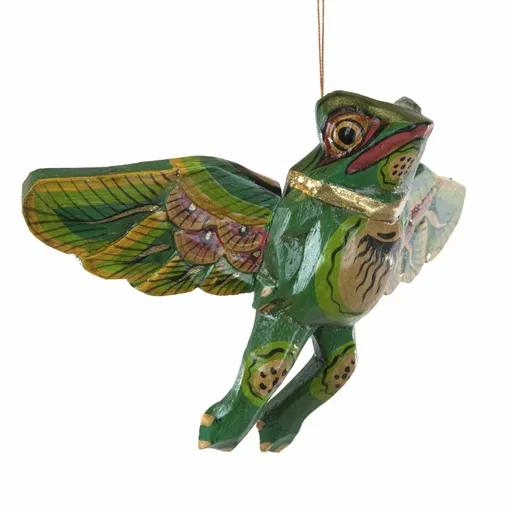Art has the magical ability to bring subjects together, making learning both creative and engaging. Whether you’re teaching history, science, maths, or even geography, art projects can help students grasp concepts in fun, memorable ways. Below, we’ve gathered 10 art projects that are perfect for cross-curricular teaching, suitable for all age groups, and sure to inspire your students to think outside the box!
1. Fossil-Inspired Clay Impressions
Subjects: Science & History
Bring the wonder of ancient times into your art lessons with fossil-inspired clay projects.
- Use dinosaurs and fossils as inspiration for creating clay impressions.
- Students can press dried seed pods, shells, or leaves into clay to mimic real fossils.
- Tie it into science by discussing how fossils form and the creatures they represent.
This hands-on project works well for topics on evolution or natural history.
2. Use Puppets to Bring Stories to Life
Subjects: English & Drama
Puppets are fantastic tools for storytelling, role-playing, and engaging students in literacy lessons!
- Choose pre-made puppets (or make a puppet yourself out of wire, wood, fabric etc) , like traditional hand puppets or animal puppets, to act out a story.
- Divide the class into small groups, and assign characters to each student. Provide a short script or let them improvise based on a story you’re reading in class.
- Use puppets to explore emotions, dialogue, and character development. For example, students can practice reading fluency by voicing their puppet’s lines or improvising conversations.
Take it a step further by incorporating themes from other subjects, such as history (acting out historical events) or science (role-playing animals in a habitat).
Why it works: Puppets reduce stage fright and allow children to express themselves creatively while enhancing their storytelling, comprehension, and speaking skills.




3. Build a Bird Habitat Diorama
Subjects: Geography & Environmental Science
Use artificial birds and other resources to create a 3D diorama that explores habitats.
- Teach about different ecosystems, such as forests, wetlands, and deserts.
- Students can include elements like dried leaves, artificial flowers, and seed pods.
- Discuss the importance of preserving biodiversity.
This activity combines artistic expression with environmental education.
4. Design Your Own Artificial Fruit Still Life
Subjects: History & Art Appreciation
Introduce students to classic still-life paintings by famous artists.
- Provide artificial fruit and encourage students to arrange their own compositions.
- Teach shading, light, and perspective techniques to bring their still lifes to life.
- Explore the historical significance of still-life art in European history.
This project develops technical skills and a deeper appreciation for art history.
5. Insect Studies with Resin Models
Subjects: Science & Biology
Insects are fascinating creatures, and insects in resin make fantastic teaching aids.
- Have students sketch or paint realistic images of the insects.
- Use magnifying glasses to study details like wing patterns and body structures.
- Discuss their roles in ecosystems, such as pollination or decomposition.
This project merges art with science for a truly interdisciplinary experience.




6. Create Mythical Masks
Subjects: Drama, Literature & History
Masks have been used throughout history in cultures worldwide.
- Use puppets and masks to explore cultural myths or theatrical traditions.
- Students can create masks inspired by characters from literature or historical periods.
- Pair the activity with a play or dramatic reenactment.
This project helps students connect to cultural heritage and explore self-expression.
7. Shell Collages and Ocean Ecosystems
Subjects: Geography & Environmental Science
Introduce marine life through a tactile and visual shell art project.
- Students can make collages with real or artificial shells.
- Explore topics like coral reefs, tides, and marine biodiversity.
- Add painted fish or starfish for extra creativity.
This project encourages environmental awareness while fostering artistic talent.




8. Create Skulls and Skeleton Blueprints
Subjects: Anatomy & History
Skulls and skeletons make excellent tools for teaching both art and science.
- Let students sketch realistic skeletons using a model as reference.
- Incorporate the history of human evolution or anatomy into the lesson.
- Use mixed media, like charcoal and ink, for dramatic effect.
This project builds observational skills and connects anatomy to creative exploration.
9. Textile Art Inspired by Geography
Subjects: Geography & Cultural Studies
Introduce students to textiles as an art medium while exploring cultural traditions.
- Use fabrics to teach about patterns from different parts of the world (e.g., African prints, Indian embroidery).
- Incorporate dried flowers or seed pods for texture.
- Students can create flags, clothing designs, or abstract maps.
This project celebrates diversity and develops tactile art skills.




10. Dinosaur Diorama with Artificial Elements
Subjects: Science & History
Combine dinosaurs, fossils, and a variety of natural elements to create a prehistoric scene.
- Provide students with materials like artificial plants, resin fossils, and miniature dinosaur models.
- Teach them about prehistoric ecosystems and the role of dinosaurs in the food chain.
- Encourage creativity by letting them imagine and design their own dinosaur species.
This hands-on project captivates students while teaching critical science concepts.
Why Cross-Curricular Art Projects Work
Cross-curricular art projects bridge the gap between creativity and core subjects. By combining disciplines, students engage their minds in new ways, strengthen their understanding of multiple topics, and develop a deeper appreciation for both art and academics.
FAQs
1. What age groups are these projects suitable for?
Most of these projects can be adapted for all ages, from primary to secondary school students, by adjusting complexity.
2. How do I integrate these projects into the curriculum?
Pair them with relevant lessons in science, history, geography, or literature to deepen understanding.
3. Where can I find materials for these projects?
Artificial fruits, fossils, shells, and other materials can be purchased online or at specialty art stores.
4. Can SEN students participate in these activities?
Absolutely! Many of these projects can be simplified or adapted to suit different learning needs.
5. How do I encourage students who aren’t naturally artistic?
Focus on the interdisciplinary aspects—like science or history—to engage their interests, and let them know it’s about creativity, not perfection.
These projects bring learning to life while encouraging creativity, curiosity, and collaboration. So, roll up your sleeves and get ready to see your students' imaginations soar!


























